

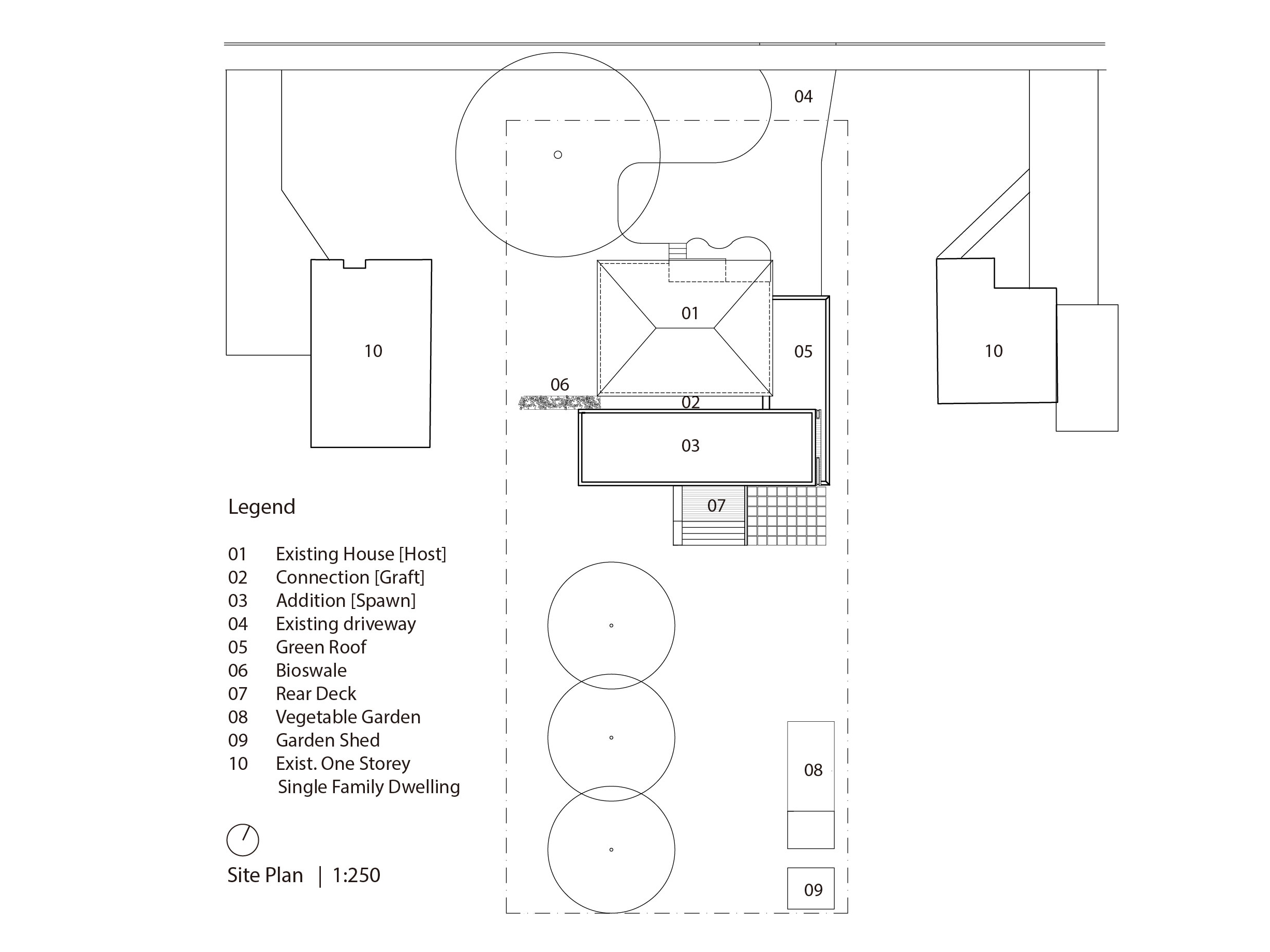

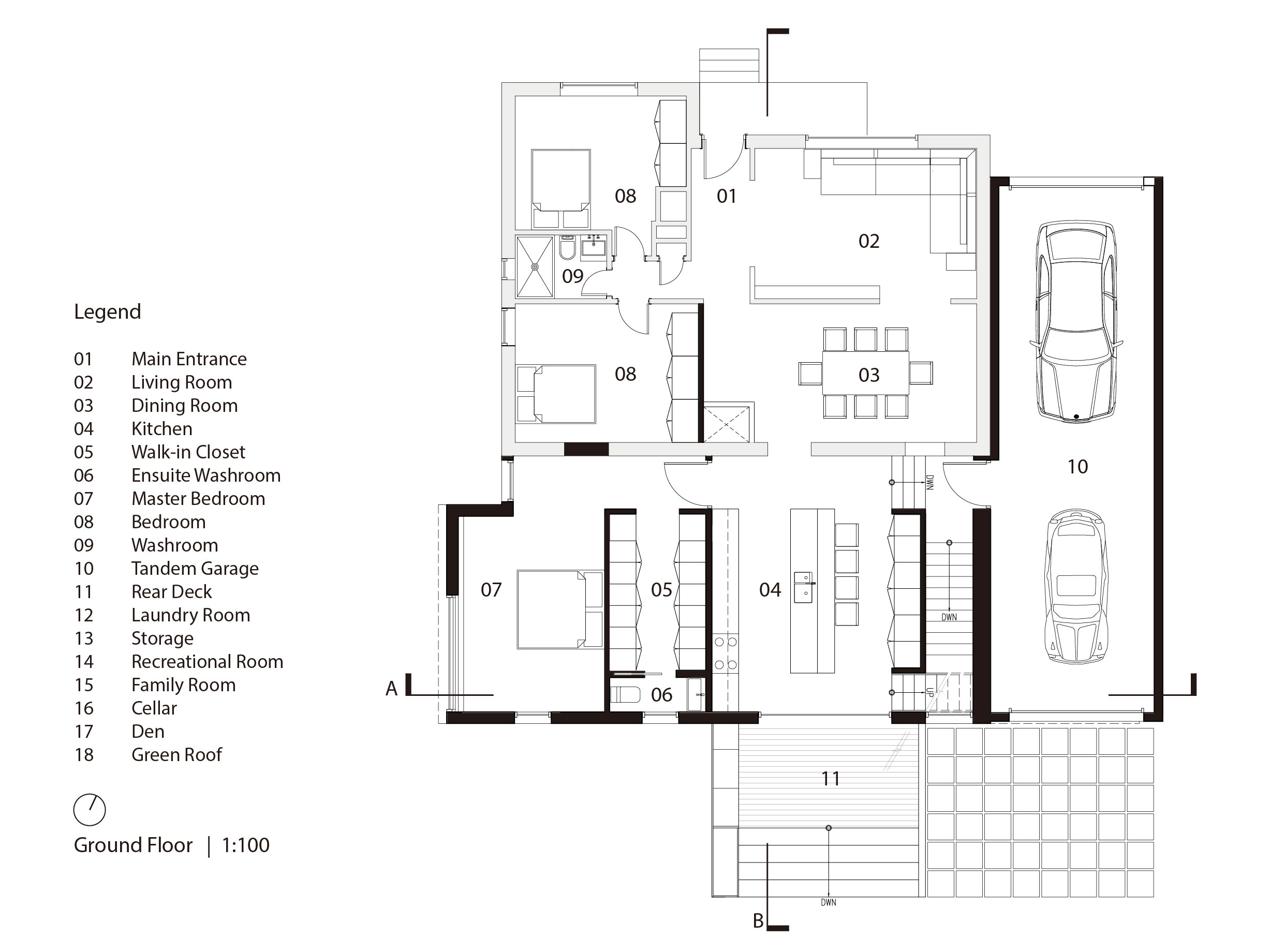
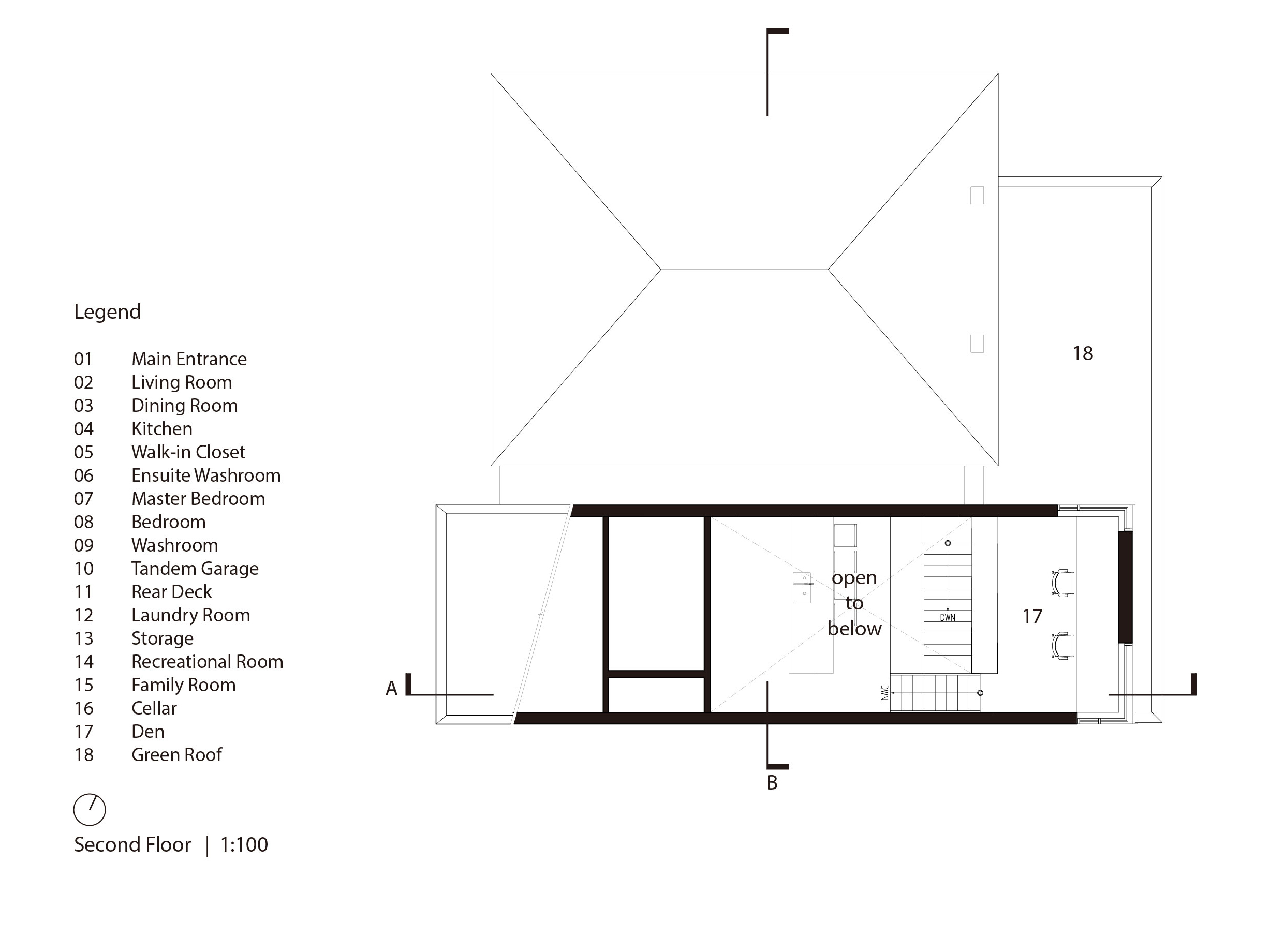

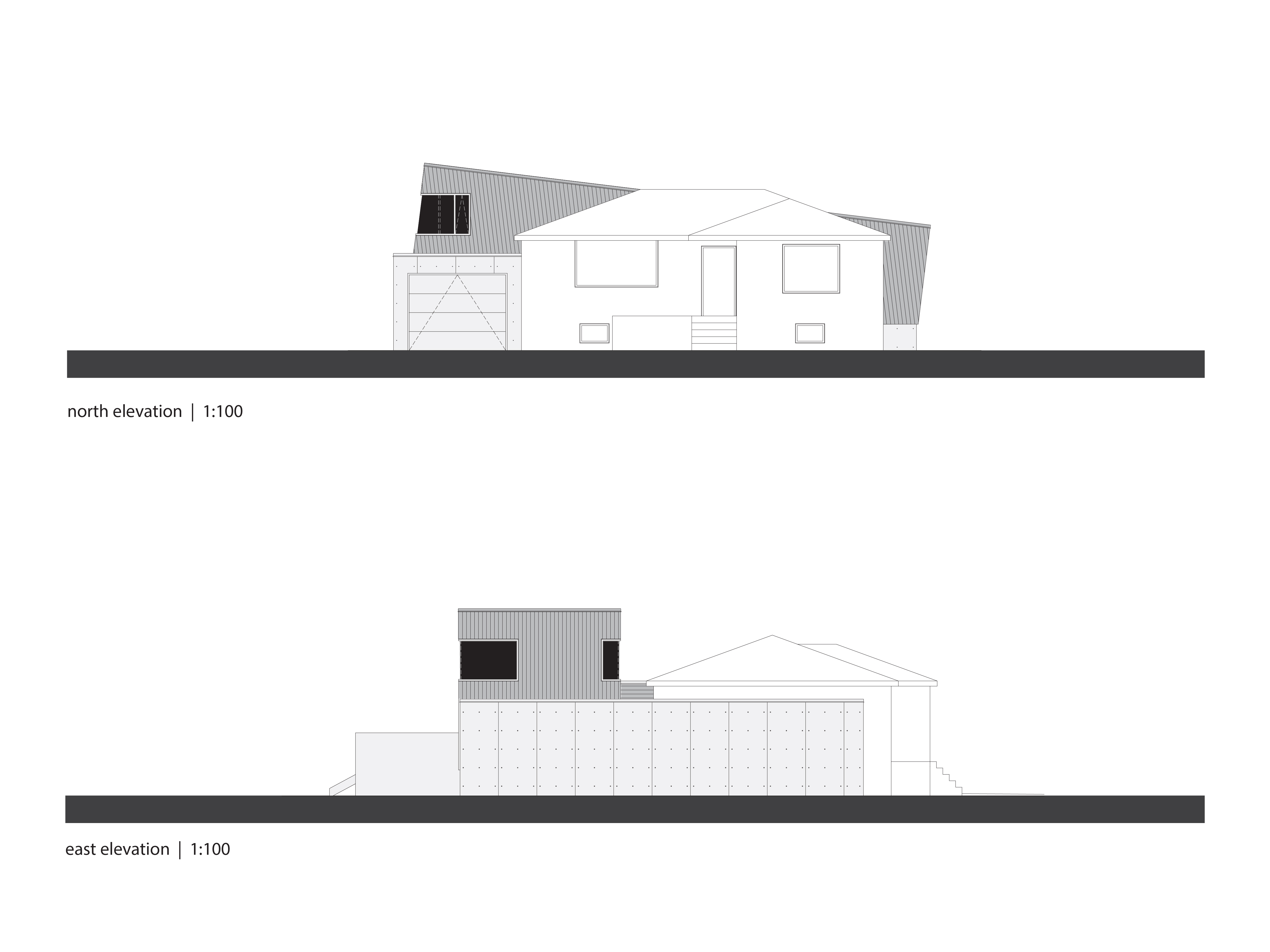



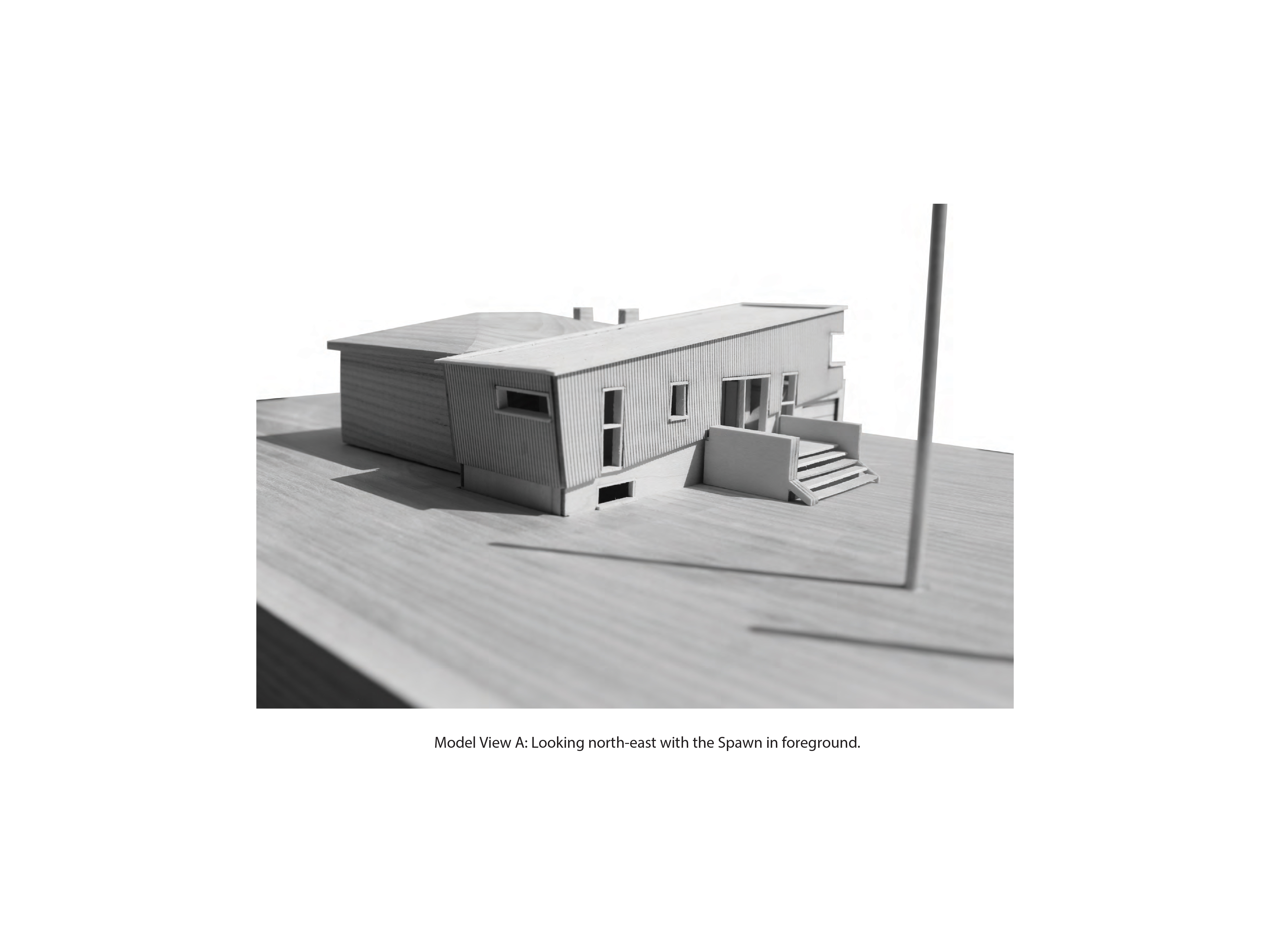
Tilt
Toronto, Ontario
[a+id+la] Residential, Unbuilt
2017
Project Team large [medium] design office
Nadia Cannataro, Francesco Martire
Toronto, Ontario
[a+id+la] Residential, Unbuilt
2017
Project Team large [medium] design office
Nadia Cannataro, Francesco Martire
Tilt: A Tale of Suburban Subterfuge
In a quiet suburban street in Mississauga, modest bungalows march along row upon row deployed on lots much too large for their single family dwelling occupants. These kinds of lots provide the territory and breeding ground for an invasive species; the scientific name Praeocupatum animum magna domus, more commonly known as the McMansion. An epidemic has taken hold of this street and others like it. The McMansion usurps the lot by crushing all existing built form. The organism propagates mutating to expand to twice its original size in footprint. Some versions of the species develop a cranial growth evidenced by its oversized uninhabitable roof volume.
Tilt is an architectural proposal to double the size of one of the aforementioned modest bungalows. However, Tilt offers the possibility for a genetic mutation of the species, one that covertly exists creating a new background while leaving an uninterrupted foreground. The existing single-family dwelling [the Host] remains, inflecting its DNA onto the rear addition [the Spawn]. The connection [the Graft] facilitates both visual and physical passage from Host to Spawn. The form of the genetic mutation establishes a compelling dialogue with its site. It remains largely masked by the host behind a kind of suburban camouflage. The Spawn furtively glances out at moments from behind the Host never fully disclosing to the street its size or its dynamic relationship to the site. It does not boast about its presence or about the multiple juxtapositions it introduces to the site. In fact it revels in its anonymity, in its disguised appearance, in its existence in the quiet shadows.
Tilt is suggestive of a type of suburban infill project that significantly increases density yet maintains a sympathetic contextual relationship. It is important to note it remains contextual while still committing to a series of probing juxtapositions advancing the architectural discourse of the typological study of suburban infill.
Tilt supplants existing typological forms with new dynamic ones, but disguises them behind a veil of existing suburbanism. It adheres to a commitment to sustainability; by building on the past not simply erasing it, by finding efficient yet compelling forms to encapsulate program requirements and infuse new dialogues between built form and ubiquitous landscapes of mowed grass, and by introducing new responsibilities of storm water management. It introduces a topography [through architecture], where one does not exist. It suggests movement in a place of stasis. It does all of these things in juxtaposition to its context yet all the while remaining contextual. It is a wolf in sheep’s clothing. It introduces a possibility of juxtaposition occurring in a context of sameness without an overt and emphatic presence from the street. The entire menu of surprises remains largely covert, only revealed through occupation of the house and its site.
